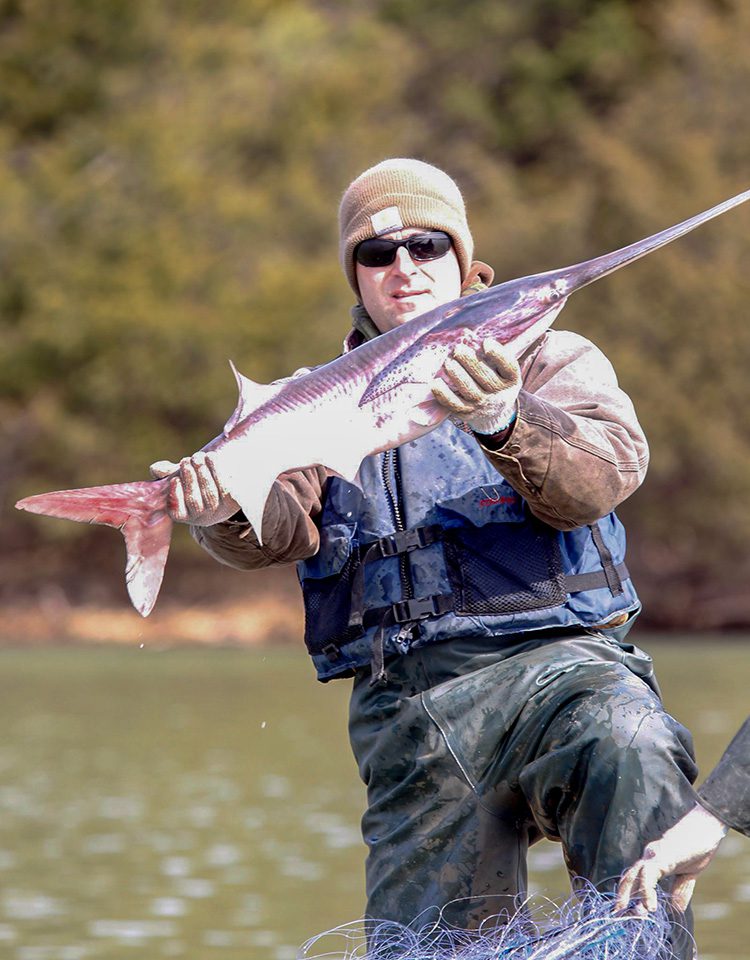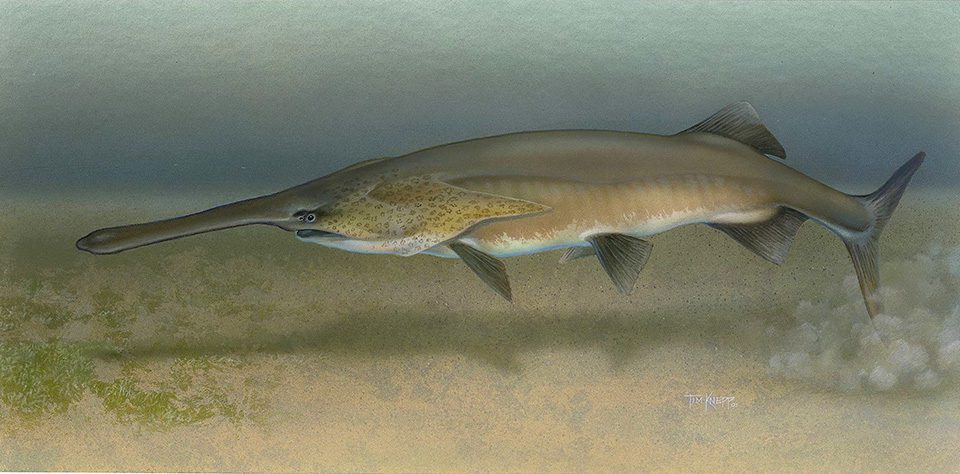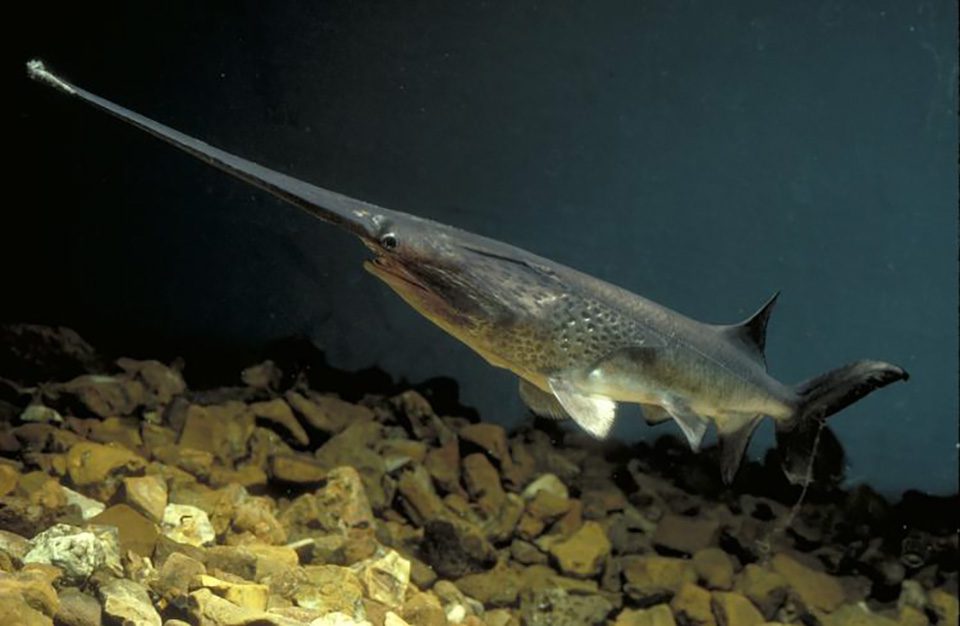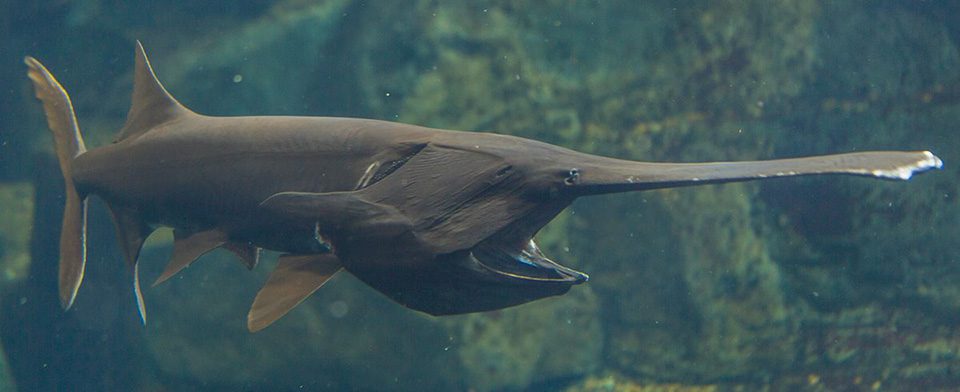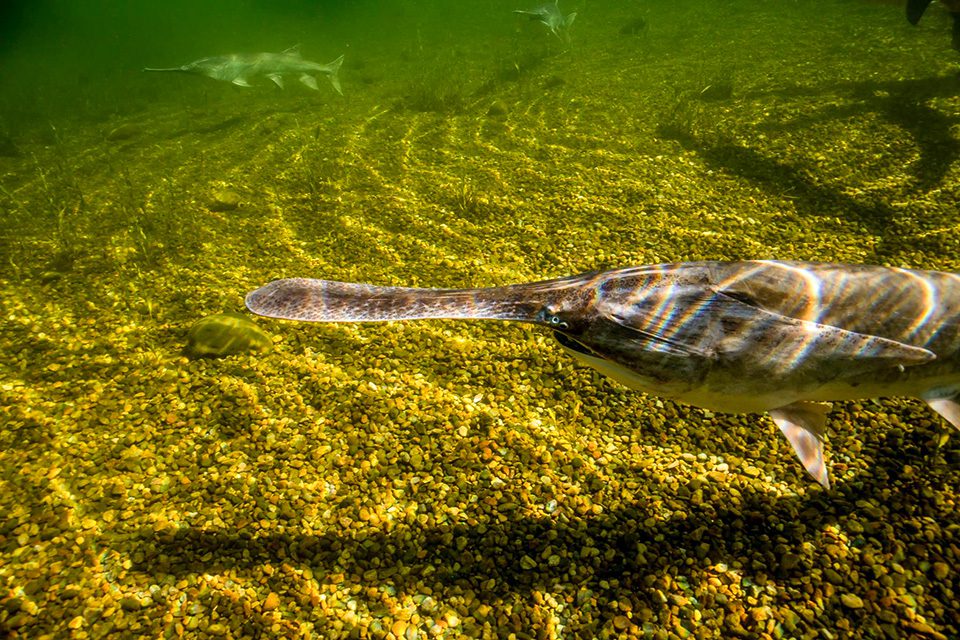Source: Arkansas Game and Fish Commission
With a shark-like appearance and a long paddle-like snout, paddlefish may look intimidating but are harmless plankton feeders.
What is a paddlefish?
It’s a primitive fish found in the Mississippi River system of North America. They’ve been around a long time—fossil records of paddlefish date back 300 million years.
What do they look like?
Paddlefish have a gray, shark-like body with a deeply forked tail, and a long, flat paddle-like snout almost one third of its body’s entire length. Paddlefish resemble sharks not only by shape, but by their skeletons as well—both have skeletons made of cartilage, not bone. Their gill cover is long and comes to a point, and they have tiny eyes. They are among the largest freshwater fish in the country. In 2015, an angler caught a 105-pound paddlefish on the White River in NW Arkansas. Most caught in Arkansas weigh less than 25 pounds. Paddlefish are sometimes called a spoonbill or spoonbill catfish—but they are not in the catfish family.
What do they eat?
Paddlefish have no teeth and eat by swimming through the water with its mouth held wide open, scooping up tiny plants and animals in the water called plankton. They filter out the food with their gill rakers. The underside of the paddlefish’s “paddle” is covered with taste buds and probably helps it to find places where plankton is the most abundant and may serve as a compass to navigate the muddy waters of big rivers. Its snout is rather fragile and is not used for rooting in the bottom mud, despite the common misconception.
Where do they live?
They are most common today in the Arkansas, Mississippi and lower White Rivers and their associated oxbow lakes. As waters rise in spring, paddlefish move upstream to gravel bars to spawn. Because they need lots of open, free-flowing rivers plus oxbows and backwaters for feeding and gravel bars for spawning, paddlefish numbers have declined with damming of river, stream channelization, levee construction and drainage of bottomlands.
Do people fish for paddlefish?
At the turn of the last century, paddlefish were ranked as one of the most important commercial fishes in the Mississippi Valley with a total harvest of nearly 2.5 million pounds in 1899. It is a good food fish (especially smoked or fried) with few bones and is also a source of caviar. The lower White River was home to an active paddlefish roe fishery in the early 1980s and the industry boomed again statewide in the early 2000s. There is a modest roe industry for paddlefish today in Arkansas. However, China now farms paddlefish and can offer less expensive roe to interested buyers (i.e. cruise ships, Belgium, Japan). Paddlefish do not bite a baited hook, but are snagged by anglers using treble hooks. Commercial fisherman catch them with nets.
